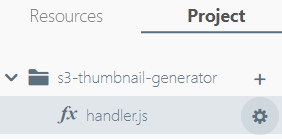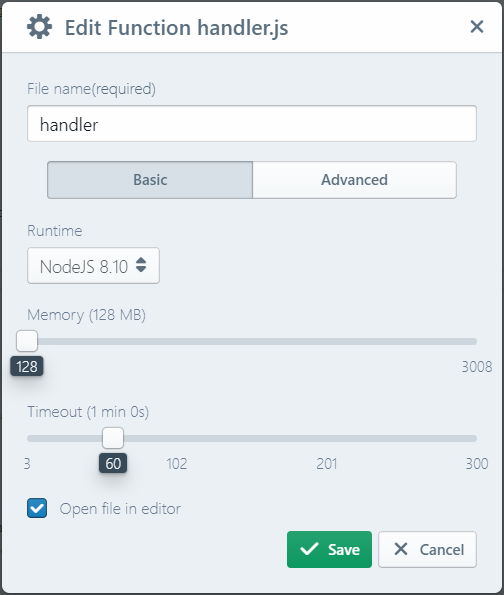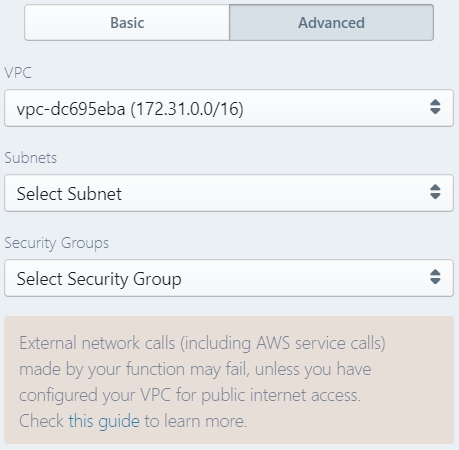sigma
Function Configurations
In Sigma, you can configure and tune individual serverless functions for optimal runtime performance using this option.
Opening Function Configurations
While in the Projects tab of the Resources pane of the editor, click the cog wheel icon against any function to open its configuration settings.

Available Configuration Options
Basic Tab

- File name: name of the function, without the suffix (file extension)
- Runtime: programming langugage used for the function; available options differ based on the cloud platform (e.g. NodeJS 4.3, 6.10 and 8.10 are supported on AWS)
- Memory: maximum amount of memory the function runtime can occupy; available range depends on the cloud platform (e.g. 128 MB to around 3 GB (3008 MB) on AWS)
- Timeout: maximum duration of a function execution (after which the platform considers the execution as “timed out”); also depends on the platform (e.g. 1 second to 5 minutes (300 seconds) on AWS)
NOTE: Functions with higher memory limits are usually assigned higher computation power (CPU time), but they may also incur higher costs.
Additional options may be available based on the cloud platform:
- Execution/Trigger Type (GCP): the type of the function trigger (HTTP vs background); note that you need to manually change the function signature and any already written logic, if you change this property for an existing function
Advanced Tab

This usually contains cloud platform-specific advanced configurations.
- VPC (AWS/GCP): the Virtual Private Cloud (cloud VPN) where the function should be deployed. This provides additional security since the function would be deployed inside a private network, and would generally be inaccessible from, and not able to access, the public internet.
- Subnets (AWS): the subnets (cloud VPN) where the function should be deployed. This provides additional security since the function would be deployed inside a private network, and would generally be inaccessible from, and not able to access, the public internet.
- Security Groups (AWS): the security groups (cloud VPN) where the function should be deployed. This provides additional security since the function would be deployed inside a private network, and would generally be inaccessible from, and not able to access, the public internet.
NOTE: VPC containment may mean that external service (e.g. AWS/GCP API) calls made by your function may also fail. Check out the respective cloud platform documentation (e.g. AWS, GCP) to learn more.
Once configurations are complete, click Save to persist them. The changes will be propagated to the deployed functions during the next deployment/update.
NOTE: Quick Deploy actions will not propagate configuration changes, as they only deal with code changes.